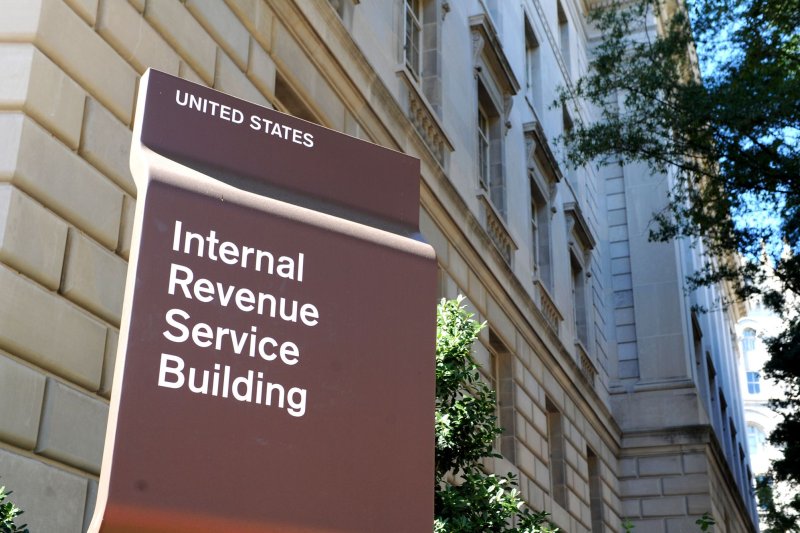The Internal Revenue Service seized millions in legally earned money from businesses and individuals because of how they deposited the money into banks. A watchdog report found investigators willfully ignored department protocol to pursue such "structuring" cases. File photo by Kevin Dietsch/UPI |
License Photo
April 6 (UPI) -- The IRS wrongly seized millions from business owners and individuals because the way they deposited money into bank accounts set off flags intended to catch drug dealers, according to a watchdog's report.
Under U.S. law, individuals and banks are required to report deposits of more than $10,000 to the Treasury Department. The reason is for investigators to be able to track large cash deposits that might appear suspicious.
However, to avoid the extra paperwork, some business owners regularly split up large deposits to slightly less than $10,000 at a time. The practice is known as "structuring" and is technically illegal under the Bank Secrecy Act, even if the money is earned legally.
According to a report by the IRS inspector general, agents honed in on such cases and seized assets without fully investigating whether the funds were ill-gotten. In so doing, agents also willfully disregarded the intent of the Bank Secrecy Act, which was meant to help track actual criminals, not everyday citizens whose only crime was avoiding extra paperwork.
Furthermore, the report stated agents actually preferred to chase cases where structuring deposits was the only suspected crime because they were easier to prosecute.
In all, agents seized $193.1 million in 736 investigations from 2012 to 2015 where deposit structuring was the sole suspected crime. From there, agents used shady tactics to resolve the cases once the assets were seized by the IRS. In many cases, suspects were not informed of their Miranda rights. In other instances, they were threatened with criminal prosecution as a means to resolve the civil asset forfeitures.
In a random sample of 278 structuring cases, 91 percent of individuals had earned the money they deposited legally, the report found. Still, agents pushed to seize the money.
"In most instances, interviews with the property owners were conducted after the seizure to determine the reason for the pattern of banking transactions and if the property owner had knowledge of the banking law and had intent to structure," the report concluded.
In dozens of instances, the property owners provided plausible explanations for their pattern of deposits such as cash receipts from their businesses that happened to total slightly less than $10,000 per week. In virtually none of those cases did agents seek to verify the property owner's claims.
In 2014, the IRS announced it would stop pursuing civil cases against individuals solely suspected of structuring, however the inspector general's report found evidence some agents continued with the process, disregarding department policy.















